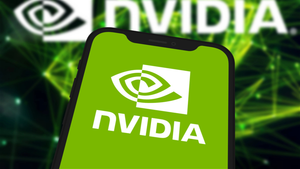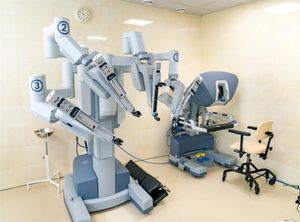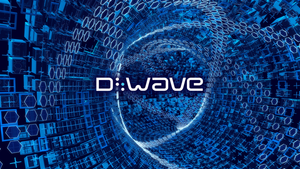
San Francisco, CA – October 13, 2025 – The global technology and semiconductor sectors are experiencing an unprecedented surge, driven by the relentless march of Artificial Intelligence (AI). This "AI Supercycle" is fundamentally reshaping the industry, creating an insatiable demand for advanced computing power and propelling chip shares to new heights. Recent pivotal developments, including Broadcom's (NASDAQ: AVGO) strategic partnership with OpenAI and a significant stock jump for Applied Materials (NASDAQ: AMAT), underscore the profound and immediate implications of this AI-fueled expansion for investors and the broader market.
The market's enthusiasm is palpable, characterized by robust investment in AI infrastructure and a clear shift towards specialized silicon solutions. This momentum is not merely a fleeting trend but a foundational transformation, positioning semiconductor companies at the epicenter of the next wave of technological innovation. As AI continues to permeate every facet of industry and daily life, the companies providing the underlying hardware are poised for sustained growth, drawing intense scrutiny and capital from both retail and institutional investors.
Unpacking the AI Catalyst: Broadcom's OpenAI Alliance and Applied Materials' Ascent
The current AI-driven boom in semiconductors is marked by several key events and trends. A landmark development, announced on October 13, 2025, is the strategic, multi-billion dollar partnership between OpenAI and Broadcom (NASDAQ: AVGO). This collaboration is set to revolutionize AI compute capabilities, focusing on the co-development and deployment of custom AI accelerators and systems. The ambitious goal is to deliver an astounding 10 gigawatts of specialized AI computing power, with deployments commencing in the second half of 2026 and reaching full implementation by the end of 2029. Under this agreement, OpenAI will lead the design of these accelerators, embedding insights from its cutting-edge AI models directly into the hardware. Broadcom, leveraging its unparalleled expertise in custom chip development and advanced Ethernet networking hardware, will be responsible for the development and deployment, ensuring global scalability. This strategic move by OpenAI signals a clear intent to develop its own custom silicon, aiming to reduce reliance on third-party GPU suppliers and optimize performance and cost-efficiency for its advanced AI models. Following this announcement, Broadcom's stock surged by nearly 10-11%, reflecting strong investor confidence in its pivotal role in providing bespoke AI chips and advanced Ethernet networking solutions for large-scale AI data centers.
Concurrently, Applied Materials (NASDAQ: AMAT), a crucial player in semiconductor equipment manufacturing, has also witnessed a significant stock jump, propelled by several factors intrinsically linked to the AI boom. As the AI revolution fuels massive demand for high-performance chips, Applied Materials provides the essential equipment for their fabrication. Chipmakers like NVIDIA (NASDAQ: NVDA), AMD (NASDAQ: AMD), and Intel (NASDAQ: INTC) increasing their AI chip production directly translates to higher demand for Applied Materials' tools. Furthermore, a worldwide push for new semiconductor fabrication plants (fabs) to secure supply chains, particularly in the U.S., Europe, and Asia, directly boosts demand for the company's advanced manufacturing equipment. Applied Materials' technological leadership in critical areas such as deposition, etching, and patterning technologies, including innovations like Gate-All-Around (GAA) technology, are indispensable for producing the next generation of energy-efficient and high-performance chips required by AI applications. The company's robust financial performance, including five consecutive years of growth and impressive gross margin improvement, coupled with a stable recurring revenue stream from its Applied Global Services (AGS) division, further solidifies its position. Broader positive sentiment in the semiconductor sector, including an Nvidia-Intel partnership and an analyst upgrade from Morgan Stanley, have also contributed to AMAT’s upward trajectory.
The timeline leading to this moment has been characterized by escalating investments in AI research and development, a growing recognition of AI's transformative potential across industries, and increasing geopolitical focus on semiconductor supply chain resilience. Major hyperscalers like Amazon Web Services (AWS) (NASDAQ: AMZN), Meta Platforms (NASDAQ: META), and Microsoft (NASDAQ: MSFT) have been aggressively investing in and optimizing their AI compute strategies, leading to higher capital expenditure that benefits the entire semiconductor supply chain. This sustained investment has created a fertile ground for the current surge, with companies like Broadcom and Applied Materials emerging as key enablers of the AI future.
Winners and Losers in the AI Chip Race
The AI-driven semiconductor boom is creating clear winners and losers, reshaping competitive landscapes. Winning companies are primarily those at the forefront of AI chip design, manufacturing equipment, and specialized networking. NVIDIA (NASDAQ: NVDA) remains a dominant force, with its GPUs being the de facto standard for AI training and inference. However, the Broadcom-OpenAI deal highlights a growing trend towards custom AI silicon, which could benefit companies like Broadcom (NASDAQ: AVGO) that specialize in Application-Specific Integrated Circuits (ASICs). Other potential winners include AMD (NASDAQ: AMD), with its MI series accelerators challenging NVIDIA, and Intel (NASDAQ: INTC), which is aggressively re-entering the foundry business and developing its own AI accelerators.
In the manufacturing equipment sector, Applied Materials (NASDAQ: AMAT), ASML Holding (NASDAQ: ASML), and Lam Research (NASDAQ: LRCX) are poised for significant gains as chipmakers invest heavily in new fabs and advanced process technologies. Foundries like Taiwan Semiconductor Manufacturing Company (TSMC) (NYSE: TSM), the world's largest contract chipmaker, will continue to be crucial, benefiting from increased orders for advanced AI chips from a multitude of designers. Companies providing high-bandwidth memory (HBM) like SK Hynix (KRX: 000660) and Samsung Electronics (KRX: 005930) are also seeing surging demand.
Conversely, companies that might lose or face significant challenges are those that fail to adapt to the rapid pace of AI innovation or are overly reliant on general-purpose computing that is being supplanted by specialized AI hardware. Traditional CPU manufacturers who do not pivot effectively to AI-centric designs could see market share erode. Companies with less advanced manufacturing capabilities or those unable to secure sufficient capital for R&D and fab expansion may struggle to compete. Furthermore, the trend towards custom silicon by major AI developers like OpenAI could potentially introduce pricing pressures on general-purpose AI chips in the long run, affecting companies that do not diversify their offerings. Smaller, less agile players in the semiconductor ecosystem might find it difficult to keep pace with the massive investments and technological leaps required by the AI supercycle, leading to consolidation or diminished relevance.
Wider Significance: A New Industrial Revolution
This AI-driven surge in the semiconductor sector represents more than just a market rally; it signifies a new industrial revolution. This event fits perfectly into broader industry trends of digital transformation, the proliferation of cloud computing, and the increasing demand for edge AI capabilities. AI is no longer a niche technology but a core component of future economic growth, impacting everything from healthcare and finance to manufacturing and autonomous systems. The demand for more powerful, energy-efficient, and specialized AI chips will only intensify as AI models become more complex and ubiquitous.
The ripple effects on competitors and partners are substantial. For competitors, the Broadcom-OpenAI deal highlights the imperative to innovate and potentially form strategic alliances to compete with custom silicon solutions. Companies that are not actively developing or enabling AI hardware risk being left behind. For partners, particularly those in the software and cloud services sectors, the availability of advanced, custom AI hardware from Broadcom and others will enable them to offer more powerful and efficient AI services, fostering further innovation.
Regulatory and policy implications are also significant. Governments worldwide are increasingly recognizing the strategic importance of semiconductor manufacturing, leading to initiatives like the CHIPS Act in the U.S. and similar efforts in Europe and Asia. These policies aim to bolster domestic chip production, secure supply chains, and reduce reliance on single regions, driven by both economic competitiveness and national security concerns. The AI supercycle will only intensify these geopolitical considerations, making semiconductor leadership a critical component of national strategy. Historically, this period draws parallels to the early days of the internet boom, where foundational infrastructure companies saw exponential growth. However, the current AI wave is arguably more pervasive, with applications spanning every industry, suggesting a more sustained and profound impact than previous tech cycles.
What Comes Next: Navigating the AI Frontier
Looking ahead, the short-term possibilities for the AI and semiconductor sectors include continued robust demand for AI chips, further strategic partnerships between AI developers and chip manufacturers, and accelerated investments in advanced packaging technologies and materials science. We can expect to see more companies exploring custom silicon solutions to optimize performance and cost for their specific AI workloads, potentially leading to increased fragmentation in the AI chip market beyond the current GPU dominance. In the long term, the integration of AI into a wider array of devices, from personal computers to edge devices and IoT, will drive sustained growth, shifting the focus from purely data center-centric AI to ubiquitous, distributed AI.
Potential strategic pivots or adaptations required for companies will involve a continuous emphasis on R&D for next-generation AI architectures, a focus on energy efficiency in chip design, and flexible manufacturing capabilities to meet diverse demands. For those in the equipment sector, adapting to new materials and process technologies will be paramount. Market opportunities will emerge in specialized AI software, AI model optimization for custom hardware, and services related to AI infrastructure deployment and maintenance. However, challenges will include managing increasingly complex supply chains, navigating geopolitical tensions, and addressing the immense power consumption requirements of large-scale AI.
Potential scenarios and outcomes range from a sustained, multi-decade AI-driven growth cycle, akin to the rise of the internet, to periods of market correction if investment outpaces actual deployment or if technological bottlenecks emerge. A key scenario involves the continued emergence of new AI hardware paradigms that could challenge existing market leaders. Another is the potential for consolidation among smaller players as the cost of innovation and manufacturing scales. The market will also closely watch for advancements in quantum computing and neuromorphic computing, which could represent future shifts in AI hardware.
Comprehensive Wrap-Up: The Enduring Impact of the AI Supercycle
In summary, the AI-driven growth in the technology and semiconductor sectors is a defining market narrative of our time. Key takeaways from recent events, such as the Broadcom (NASDAQ: AVGO) and OpenAI partnership and Applied Materials' (NASDAQ: AMAT) stock surge, underscore the critical role of specialized hardware in enabling the AI revolution. The market is moving towards custom silicon solutions, intense capital expenditure in manufacturing, and a relentless pursuit of more powerful and efficient processing capabilities. This trend is not merely a cyclical uptick but a fundamental re-orientation of the technology landscape.
Moving forward, the semiconductor market will likely remain highly dynamic and central to global economic growth. Investors should anticipate continued innovation, strategic alliances, and potential shifts in market leadership as companies vie for dominance in the AI hardware space. The long-term significance of this supercycle cannot be overstated; it is laying the groundwork for a future where AI permeates every aspect of society and industry. The lasting impact will be seen in enhanced productivity, new scientific discoveries, and a transformed digital experience.
What investors should watch for in the coming months includes further announcements of custom AI chip collaborations, earnings reports from key semiconductor players for insights into order backlogs and capital expenditure plans, and any regulatory developments impacting global supply chains. Monitoring the pace of AI model development and deployment will also be crucial, as this directly influences the demand for underlying hardware. The AI supercycle is here, and its implications will resonate across financial markets for years to come.
This content is intended for informational purposes only and is not financial advice







